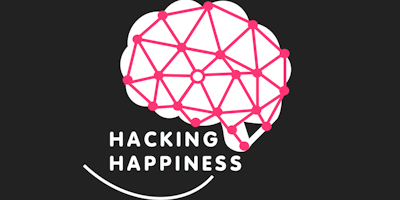Understanding the human environment and its impact on wellbeing using machine learning
In collaboration with the Royal Society - please join us on January 16th-17th for 28 hours of hacking happiness and explore how machine learning can be used to measure, understand, predict and increase happiness.
In this multidisciplinary hackathon, we hope to attract professionals from different disciplines, including machine learning, data science, design and software engineering to come together and develop innovative solutions addressing happiness.
We are especially interested in ideas that emphasise human-AI collaboration. We would be interested to see ideas that address ways in which new machine learning systems can work together with people in a broad variety of topics such as conversational assistants, interactive AI, active learning, human-agent collaboration, crowd-sourcing or citizen science. We’d be looking not just at “pure” machine learning hacks but also those that combine existing techniques with novel interactions with people. And since every hackathon concludes in a fast-paced presentation of demos, we’d hope to inventive ways to present the hacks, perhaps involving user testing, videos or sketches.
Current theories on happiness suggest several core factors contribute to building happiness on a personal level; in particular engaging in the natural environment, enjoying green space and open air. We will be making a number of data feeds available to understand this specific aspect of happiness.
There are three challenges to focus your creativity:
1. Quantified happiness: how can we measure, understand, predict and increase happiness from personal, geographic, social and environmental data sets? We will have multiple datasets available such as ONS, news, twitter data and more (link). And of course we encourage participating teams to bring additional data
2. Augmented happiness: how can we measure, understand, predict and increase happiness using wearables or sensors? We will have a variety of devices and feeds available such as EEG, GSR, motion, activity sensors, and of course we encourage participating teams to bring additional devices
3. Interactive happiness: how can we measure, understand, predict and increase happiness through novel human-AI collaborations and interactions?
Location
Dates
to 17th January 2017 - 09:00 PM
